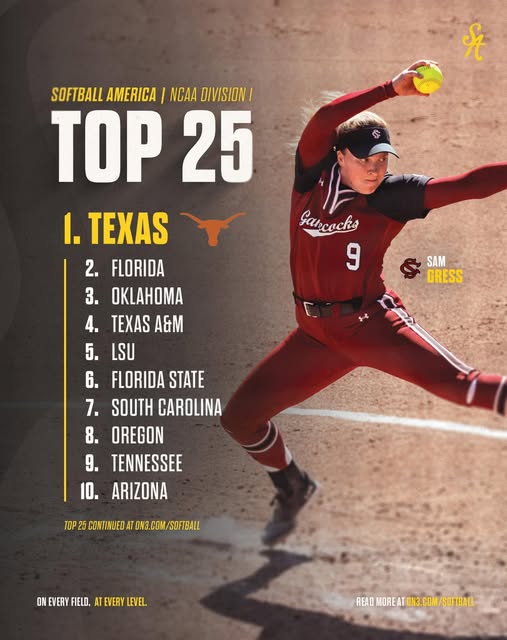In the world of collegiate sports, especially in NCAA Division I athletics, rankings play an essential role in shaping the narrative of a team’s season. From football to basketball, every team wants to be at the top of the polls, but the system by which those rankings are determined is often more complex and, at times, problematic. When we see a team ranked #1 in the country, it’s natural to assume that their position is the result of a rigorous and comprehensive analysis of their performance. However, that assumption doesn’t always align with reality.
At the core of the current ranking systems is the idea of voting — specifically, a panel of sportswriters, coaches, and sometimes even fans casting ballots to determine which teams deserve the highest spots. But what does this system miss? What factors are left out of the equation when we rely on the judgment of individuals who may not have all the data, or who bring their own biases to the table? In this write-up, we will examine the flaws of voting-based ranking systems and explore the benefits of alternative methods, such as those based on performance metrics like the NCAA’s RPI (Ratings Percentage Index).
The Power of the Vote: Subjectivity in Rankings
The most glaring flaw in the current ranking system lies in the reliance on votes. Each week, teams are ranked by a group of individuals who cast their votes based on a variety of criteria. These criteria are subjective and can vary greatly from one voter to another. Some voters might prioritize a team’s overall win-loss record, while others might give more weight to head-to-head matchups or the strength of a team’s schedule.
There is also the problem of voting bias. Coaches, in particular, often have a vested interest in boosting their own team’s ranking or deflating the ranking of a rival school. These biases can distort the integrity of the rankings. While some voters may aim to be as objective as possible, human nature inevitably influences decision-making. As a result, teams that may deserve a higher spot due to their actual performance could be overlooked, while teams with inflated rankings ride on the coattails of subjective votes.
Another issue with voting is the potential for recency bias. A team may suffer a close loss to a ranked opponent early in the season, only to have that loss be overblown or forgotten in the minds of voters when it comes to ranking them later on. Similarly, a team that experiences a dramatic winning streak at the end of the season may be ranked highly based on their recent success, even though their earlier losses were more damaging. This disregard for consistency over time can lead to rankings that do not accurately reflect the overall strength of a team.
The Issue with Limited Factors: Missing Key Metrics
One of the major limitations of voting-based ranking systems is the narrow scope of factors considered. Voters may not fully take into account key performance metrics such as a team’s strength of schedule, quality of wins, or how well a team performs against ranked opponents. Instead, rankings can sometimes focus on more superficial elements, such as overall win-loss records, which do not always capture the true strength of a team.
For example, consider a team that plays in a conference where the overall level of competition is low. This team might rack up a high number of wins against weaker opponents, boosting their overall record, but this doesn’t necessarily mean they are one of the best teams in the country. Conversely, a team in a tougher conference might suffer more losses, but those losses could come against stronger opponents. Yet, this team might be ranked lower simply because their record doesn’t reflect the true difficulty of their schedule.
Moreover, the impact of blowout victories or losses can be overstated in voting systems. A team might lose a game by a large margin, which can disproportionately affect their ranking, even though they may have performed admirably in other games. Similarly, a team that wins by a wide margin may receive a ranking boost, even if the competition was relatively weak. These superficial factors can distract from the more nuanced and important metrics that truly define a team’s quality.
The RPI: A More Objective Approach to Rankings
While the voting system often relies on subjective factors, the NCAA’s RPI (Ratings Percentage Index) offers a more data-driven, objective approach to rankings. The RPI is based on a team’s win-loss record, the strength of their schedule, and the strength of their opponents’ schedule. By considering these factors, the RPI provides a clearer picture of a team’s actual performance and their standing relative to others.
Unlike voting systems, which can be influenced by personal biases and a limited set of criteria, the RPI accounts for the quality of victories and losses. A team that beats strong opponents will have a higher RPI, even if their overall record isn’t as impressive as a team that beats weaker opponents. The same logic applies to losses — teams that lose to higher-ranked opponents are not penalized as severely in the RPI, while teams that suffer defeats to weaker opponents are penalized more.
The RPI’s ability to incorporate strength of schedule into the rankings helps paint a more accurate picture of a team’s true capabilities. A team that plays a difficult schedule but still wins a majority of their games should be ranked higher than a team with an easy schedule but a similar win-loss record. This is an important distinction that voting-based rankings often fail to recognize.
The Role of Other Metrics: Sagarin Ratings, ESPN Power Index, and More
While the RPI is one of the most well-known metrics, it’s not the only one used to evaluate teams. Other systems, such as the Sagarin Ratings and ESPN’s Power Index, also use objective data to rank teams. These rankings rely on advanced statistical models that take into account factors such as margin of victory, road performance, and even team efficiency metrics.
For example, the Sagarin Ratings consider not only a team’s wins and losses, but also their margin of victory in each game, which helps to differentiate between teams that have won narrowly and those that have dominated their opponents. Similarly, the ESPN Power Index uses a combination of metrics, including past performance, strength of schedule, and recent trends, to generate a more comprehensive ranking.
These alternative rankings provide a more holistic view of a team’s performance and can often highlight discrepancies in the voting system. A team ranked highly by one of these systems might be undervalued by voters, while a team ranked poorly might benefit from the bias inherent in the voting process.
The Case for a More Comprehensive Ranking System
Given the shortcomings of the current ranking system, it’s clear that a more comprehensive and objective approach is needed. While voting will always play a role in determining rankings due to its tradition and the human element it brings to the process, it should not be the sole determinant of a team’s position in the standings. Instead, rankings should incorporate a wider range of factors, including advanced metrics like the RPI, Sagarin Ratings, and ESPN’s Power Index, as well as newer models that consider team efficiency, player statistics, and even game location.
In addition to these performance-based metrics, there is also the argument for integrating a more transparent system for how votes are cast and how rankings are calculated. If voters were required to submit detailed explanations for their rankings, it would not only make the process more accountable, but it could also give fans a clearer understanding of how rankings are formed. By blending the subjective nature of voting with the objectivity of advanced metrics, a more balanced and accurate ranking system could emerge.



